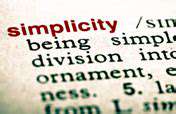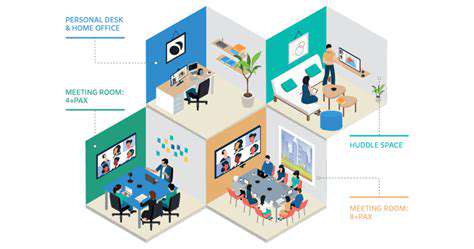Guide to Mastering Workplace Communication

Mastering Nonverbal Communication
Decoding Body Language
Understanding body language is crucial for effective communication in any workplace setting. Paying attention to posture, gestures, facial expressions, and even the use of personal space can reveal a great deal about what someone is thinking or feeling, even if they aren't explicitly stating it verbally. A slumped posture might indicate disinterest or fatigue, while a firm handshake could convey confidence and approachability. Learning to interpret these subtle cues can help you navigate conversations more effectively and avoid misunderstandings.
Observing the subtle nuances of nonverbal communication, such as maintaining appropriate eye contact, nodding to show engagement, and mirroring some of the speaker's posture can show active listening and genuine interest. Recognizing and understanding the cultural contexts of nonverbal cues is also important as different cultures may express the same emotions differently. For example, a handshake might be expected in one culture but considered inappropriate or rude in another.
The Power of Eye Contact
Maintaining appropriate eye contact is a powerful tool in nonverbal communication. It demonstrates attentiveness, sincerity, and confidence, and can make you appear more engaging and trustworthy to others. However, prolonged or intense eye contact can be perceived as aggressive or confrontational in some situations. The key is to strike a balance and adjust your approach based on the context and the individuals involved.
Conversely, avoiding eye contact can signal discomfort, dishonesty, or lack of interest. Understanding the cultural differences in norms for eye contact is crucial for avoiding misunderstandings and building positive relationships in the workplace. Practicing mindful eye contact can strengthen your communication skills and enhance your professional image.
The Impact of Facial Expressions
Facial expressions are a fundamental component of nonverbal communication. A smile can convey warmth and friendliness, while a frown can signal displeasure or concern. Understanding the subtle variations in facial expressions allows you to better understand the emotional state of those around you, which is important for building rapport and navigating interpersonal dynamics.
Tone of Voice and Vocal Cues
The tone of your voice and vocal cues, such as pitch, volume, and pace, can significantly influence how your message is received. A calm, measured tone can project professionalism and trustworthiness, while a loud, aggressive tone can be perceived as intimidating or disrespectful. Paying attention to your vocal cues can help you communicate more effectively and avoid misinterpretations.
The speed at which you speak, your pauses, and even your choice of words can all contribute to the overall impression you make. For example, speaking too quickly can convey a lack of confidence or preparedness, whereas speaking slowly and deliberately can suggest thoughtfulness and consideration. Developing awareness of your vocal cues can improve your communication skills and enhance your professional presence.
Nonverbal Communication in Different Cultures
Cultural differences play a significant role in nonverbal communication. Gestures, body language, and personal space norms vary across cultures, and failing to recognize these differences can lead to misunderstandings and misinterpretations. For example, a gesture considered polite in one culture might be offensive in another. Being mindful of cultural nuances is crucial for navigating intercultural interactions and building strong cross-cultural relationships in the workplace.
Understanding and respecting cultural norms regarding eye contact, personal space, and touch is essential for building rapport and trust. Developing cultural sensitivity and awareness will contribute to a more harmonious and productive work environment, promoting inclusivity and mutual respect.
Building Strong Relationships Through Active Listening
The Importance of Genuine Engagement
Active listening is essential for fostering trust and understanding in the workplace. When colleagues feel heard and valued, it creates a positive environment that encourages collaboration and loyalty. Genuine engagement involves not only hearing words but also paying close attention to non-verbal cues and emotional undertones that reveal true sentiments.
By demonstrating authentic interest in others’ perspectives, employees and managers can resolve conflicts more effectively and build stronger bonds. This level of attentiveness helps in reducing misunderstandings and ensures that communication is clear, respectful, and meaningful across all levels of the organization.
Techniques for Effective Active Listening
Mastering active listening requires specific techniques such as maintaining eye contact, nodding in agreement, and providing appropriate verbal affirmations like “I see” or “That makes sense.” These actions signal attentiveness and encourage the speaker to share openly without fear of interruption or judgment.
Additionally, paraphrasing or summarizing what the speaker has said demonstrates understanding and ensures that both parties are aligned. Employing these techniques consistently can significantly improve communication clarity and strengthen interpersonal relationships within the workplace.
The Role of Empathy in Building Relationships
Empathy plays a crucial role in active listening by allowing individuals to connect on a deeper emotional level. When listening empathetically, one seeks to understand not just the words but also the feelings behind them, fostering genuine compassion and respect.
This empathetic approach helps in resolving conflicts more smoothly and promotes a culture of support and openness. Employees who practice empathy are more likely to build trusting relationships, which ultimately enhances team cohesion and overall productivity.
Overcoming Barriers to Active Listening
Various barriers such as distractions, preconceived notions, or emotional biases can hinder effective active listening. Recognizing these obstacles is the first step toward overcoming them and becoming a better communicator in the workplace.
Strategies like creating a distraction-free environment, practicing patience, and actively setting aside personal judgments can help in improving listening skills. Overcoming these barriers ensures that conversations are more productive and relationships are strengthened through genuine understanding.
Implementing Active Listening in Daily Interactions
Integrating active listening into everyday workplace interactions involves conscious effort and consistent practice. Whether during team meetings, one-on-one discussions, or informal chats, paying full attention and showing genuine interest should be a priority.
Encouraging a culture where active listening is valued can lead to more effective communication, increased employee engagement, and stronger professional relationships. Regularly practicing these skills helps embed them into the organizational culture, making collaboration more seamless and effective.





![Best Smart Light Bulbs [Review]](/static/images/31/2025-05/KeyFeaturestoConsiderWhenChoosingSmartBulbs.jpg)





![How to Ask for a Raise [Tips & Script]](/static/images/31/2025-06/FollowingUpandMaintainingaProfessionalRelationship.jpg)
